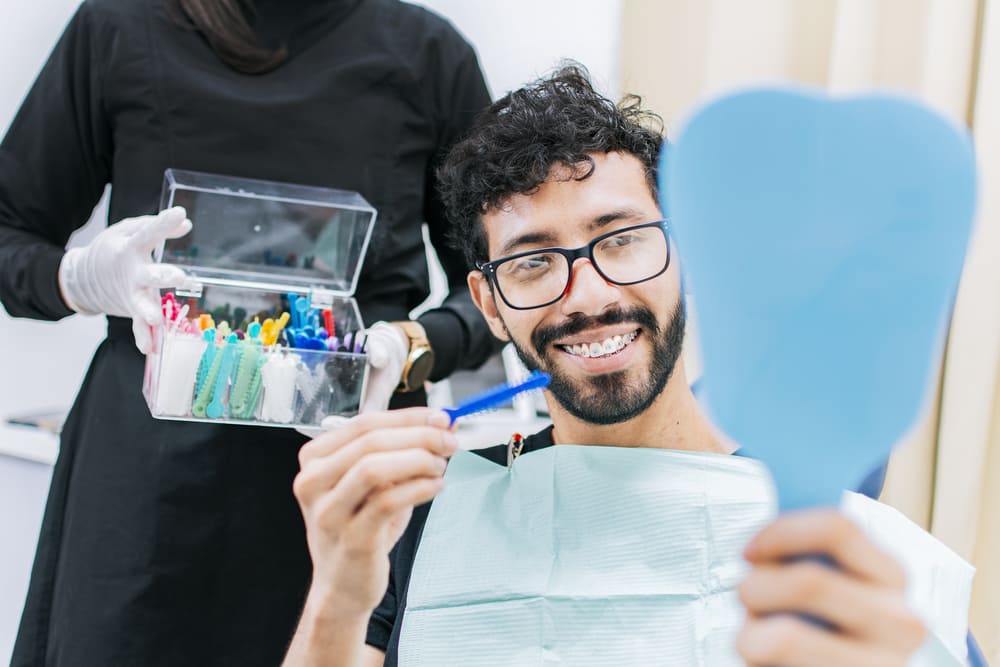The alignment of your teeth plays a significant role in how your smile looks. However, not everyone has perfectly aligned teeth, and to fix that, people often take the help of braces. Braces apply continuous pressure to gently and steadily move the teeth and jaws into place.
While using braces does the job for most people, some people do require a connecting force that helps them to achieve the proper connection between upper and lower bends. Rubber bands can help with this part by providing some extra strength that’ll help to get the correct alignment. Rubber bands align your bite and are essential to the bite fixation phase of braces treatment.
How do Rubber Bands Work With Braces?
The rubber band attached to your braces helps pull your jaw forward or back, and that depends on the motion you need to fix the alignment of your teeth. It is important that your upper teeth and lower teeth are perfectly aligned and you feel comfortable with them when you bite or chew food. Getting rubber bands attached to your braces also helps you speed up the moving and straightening process
What do Rubber Bands do for Braces?
Rubber bands help increase the pressure or the force that’s being applied to your mouth. Since rubber bands are flexible, they can be positioned in a different number of conformations depending on the requirements of your teeth. Orthodontists usually attach rubber bands by using some small metal hooks on your brackets.
When rubber bands are attached to your braces, they can help you to fix the following problems.
- Spacing between your teeth
- Straightening a misaligned tooth
- Overbite
- Underbite
- Crossbite
- Open Bite
Also read: 8 Braces Cleaning Tips for Healthy Teeth & Bright Smile
When do you Start Wearing Rubber Bands for Braces?
Not everyone who is getting braces requires rubber bands, and hence the answer to this question depends on your treatment plan and the suggestions given by your orthodontist. However, some people prefer to get rubber bands after a few adjustments with their braces, whereas others prefer to get them when the treatment is about to end.
Can you eat with rubber bands on your braces?
Rubber bands are removable, which means that you can temporarily remove them if they cause you trouble while eating or chewing food. You can also remove your rubber band when you want to brush your teeth or use dental floss.
Usually, people who wear rubber bands prefer them wearing only at night, whereas some people keep their rubber bands on for the entire day. It would help if you had a conversation with your orthodontist to know more about the appropriate time to wear or remove your rubber bands.
Are there any side effects?
While rubber bands do help you to speed up your treatment, they come with some side effects as well, and they are listed below.
- Discomfort: People usually feel pain and discomfort in their initial phase of using rubber bands. This usually happens because they apply additional force to your teeth, but you can fix it by taking some painkillers after taking advice from your orthodontist.
- Allergic reaction: People who have a latex allergy may have an allergic response because sometimes the rubber band used in your teeth may contain latex. Hence, if you have a problem with latex, it is recommended that you ask your orthodontist to switch to a Synthetic rubber band.
- Breakage: As you already know, rubber bands are easily breakable, so the risk of breakage always remains there.
Conclusion
Rubber bands are also popularly known as elastics, and they can help you apply more additional force to some regions of your mouth. At Thurman Orthodontics, we specialize in helping you with various solutions for your braces, so book your appointment with us today.
Also read: Braces Tightening; Significance, Process, Frequency More

Dr. Brian Thurman has spent his entire life enjoying all the beauty that California has to offer. A Fresno native, he still escapes to the ocean or the mountains whenever his busy schedule allows. Driven by his love for natural beauty, Dr. Thurman enjoys creating beautiful smiles and healthy bites that last a lifetime. He is proud to be the only Ivy League trained Orthodontist in the Fresno/Clovis area.

